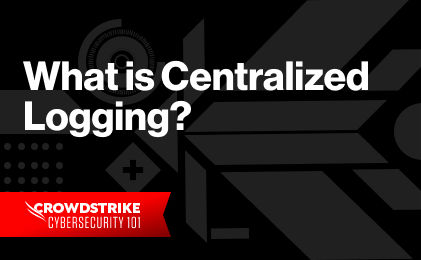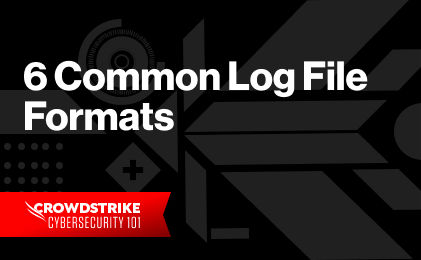Complete Guide to Next-Gen SIEM
Complete Guide to Next-Gen SIEM
A log is a computer-generated file that captures activity within the operating system or software applications. The log file automatically documents any information designed by the system administrators, including: messages, error reports, file requests and file transfers. The activity is also timestamped, which helps IT professionals and developers understand what occurred as well as when it happened.
What is Log Management?
Log management is the practice of continuously gathering, storing, processing, synthesizing and analyzing data from disparate programs and applications in order to optimize system performance, identify technical issues, better manage resources, strengthen security and improve compliance.
Log management usually falls into the following main categories:
- Collection: A log management tool that aggregates data from the OS, applications, servers, users, endpoints or any other relevant source within the organization.
- Monitoring: Log monitoring tools track events and activity, as well as when they occurred.
- Analysis: Log analysis tools that review the log collection from the log server to proactively identify bugs, security threats or other issues.
- Retention: A tool that designates how long log data should be retained within the log file.
- Indexing or Search: A log management tool that helps the IT organization filter, sort, analyze or search data across all logs.
- Reporting: Advanced tooling that automates reporting from the audit log as it relates to operational performance, resource allocation, security or regulatory compliance.
How Log Management Systems Can Help
A Log Management System (LMS) is a software solution that gathers, sorts and stores log data and event logs from a variety of sources in one centralized location. Log management software systems allow IT teams, DevOps and SecOps professionals to establish a single point from which to access all relevant network and application data. Typically, this log file is fully indexed and searchable, which means the IT team can easily access the data they need to make decisions about network health, resource allocation or security
Log management tools are used to help the organization manage the high volume of log data generated across the enterprise. These tools help determine:
- What data and information needs to be logged
- The format in which it should be logged
- The time period for which the log data should be saved
- How data should be disposed or destroyed when it is no longer needed
Learn More
Learn what the difference between logging and monitoring is and how you can leverage both to obtain robust visibility.
The Importance of Log Management
An effective log management system and strategy enables real-time insights into system health and operations.
An effective log management solution provides organizations with:
- Unified data storage through centralized log aggregation
- Improved security through a reduced attack surface, real-time monitoring and improved detection and response times
- Improved observability and visibility across the enterprise through a common event log
- Enhanced customer experience through log data analysis and predictive modeling
- Faster and more precise troubleshooting capabilities through advanced network analytics
What is Centralized Log Management?
Centralized log management is the act of aggregating all log data in a single location and common format.
Since data comes from a variety of sources, including the OS, applications, servers and hosts, all inputs must be consolidated and standardized before the organization can generate meaningful insights. Centralization simplifies the analysis process and increases the speed at which data can be applied throughout the business.
Learn More
Read our post on LaaS to understand what it is, how it makes log management more efficient, and how to choose a provider that best meets your organization's needs.
Log management vs. SIEM
Both Security Information and Event Management (SIEM) and log management software use the log file or event log to improve security by reducing the attack surface, identifying threats and improving response time in the event of a security incident.
However, the key difference is that the SIEM system is built with security as its primary function, whereas log management systems can be used more broadly to manage resources, troubleshoot network or application outages and maintain compliance.
Learn More
Read more about the differences between log management and SIEM and the advantages of using both together.
4 Common Log Management Challenges
An explosion of data, as driven by the proliferation of connected devices, as well as the shift to the cloud, has increased the complexity of log management for many organizations. A modern, effective log management solution must address these core challenges:
1. Standardization
Because log management draws data from many different applications, systems, tools and hosts, all data must be consolidated into a single system that follows the same format. This log file will help IT and information security professionals effectively analyze log data and produce insights used in order to carry out business critical services.
2. Volume
Data is produced at an incredible rate. For many organizations the volume of data continuously generated by applications and systems requires a tremendous amount of effort to effectively gather, format, analyze and store. A log management system must be designed to manage the extreme amount of data and provide timely insights.
3. Latency
Indexing within the log file can be a very computationally-expensive activity, causing latency between data entering a system and then being included in search results and visualizations. Latency can increase depending on how and if the log management system indexes data.
4. High IT Burden
When done manually, log management is incredibly time consuming and expensive. Digital log management tools help to automate some of these activities and alleviate the strain on IT professionals.

Customer Story: Vijilan Security
As a company that provides cybersecurity monitoring services, Vijilan Security was drowning in logs as the company took on more clients. Learn how by switching to CrowdStrike Falcon® LogScale, Vijilan now has the scale and performance to log everything and detect threats faster.
Download Now4 Log Management Best Practices
Given the massive amount of data being created in today's digital world, it has become impossible for IT professionals to manually manage and analyze logs across a sprawling tech environment. As such, they require an advanced log management system and tools that automate key aspects of the data collection, formatting and analysis processes.
Here are some key considerations IT organizations should consider when investing in a log management system:
1. Prioritize automation tools to reduce the IT burden.
Log management is a time-consuming process that could drain resources from the IT organization. Many recurring tasks related to data collection and analysis can be automated using advanced tooling. Organizations should prioritize automation capabilities within any new log management tools and consider updating legacy solutions to reduce manual effort during this process.
2. Use a centralized system for better access and improved security.
A centralized log management doesn't just improve data access-it dramatically strengthens the organization's security capabilities. Storing and connecting data in a centralized location helps organizations more quickly detect anomalies and respond to them. In this way, a centralized log management system can help reduce breakout time-or the critical window wherein hackers can move laterally to other parts of the system.
3. Create a bespoke monitoring and retention policy to better manage volume.
Given the volume of data being created, organizations must be discerning as to what information is collected and how long it should be retained. Organizations should perform an enterprise-wide analysis to determine what inputs are critical to each function.
4. Leverage the cloud for added scalability and flexibility.
Given the ever-growing data landscape, organizations should consider investing in a modern, cloud-based solution for their log management system. Using the cloud provides enhanced flexibility and scalability, easily allowing the organizations to expand or shrink their processing and storage capacity based on variable needs.
Discover the world’s leading AI-native platform for next-gen SIEM and log management
Elevate your cybersecurity with the CrowdStrike Falcon® platform, the premier AI-native platform for SIEM and log management. Experience security logging at a petabyte scale, choosing between cloud-native or self-hosted deployment options. Log your data with a powerful, index-free architecture, without bottlenecks, allowing threat hunting with over 1 PB of data ingestion per day. Ensure real-time search capabilities to outpace adversaries, achieving sub-second latency for complex queries. Benefit from 360-degree visibility, consolidating data to break down silos and enabling security, IT, and DevOps teams to hunt threats, monitor performance, and ensure compliance seamlessly across 3 billion events in less than 1 second.







